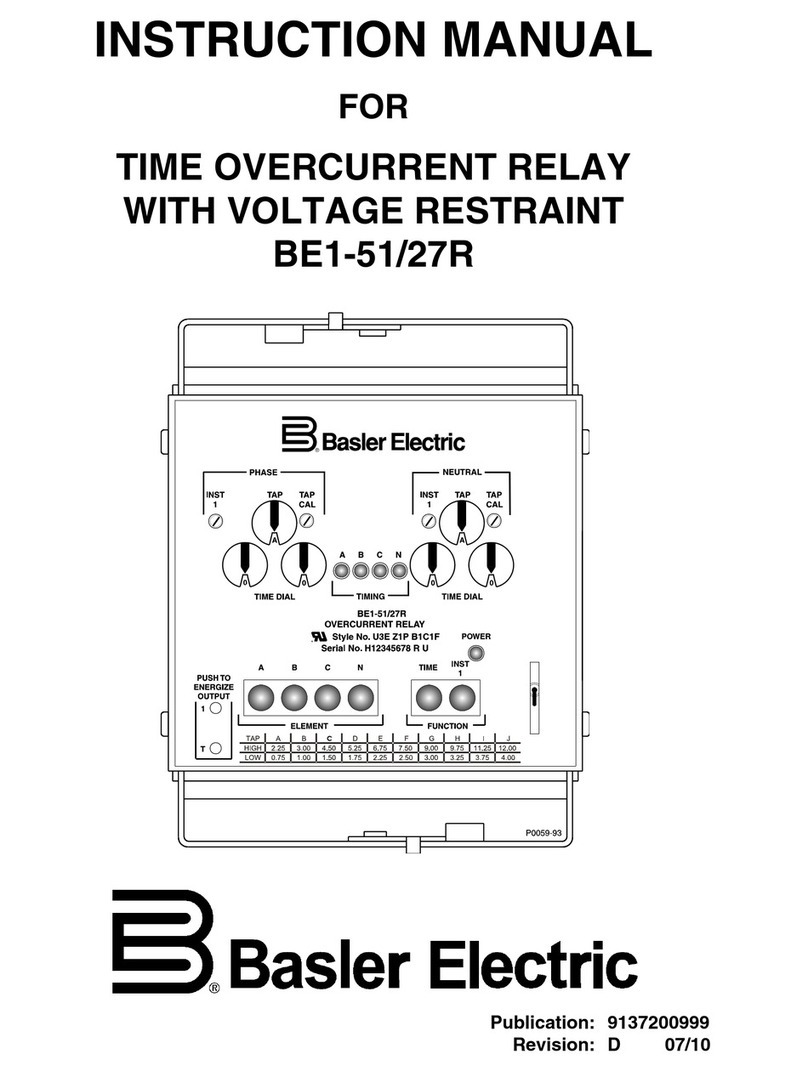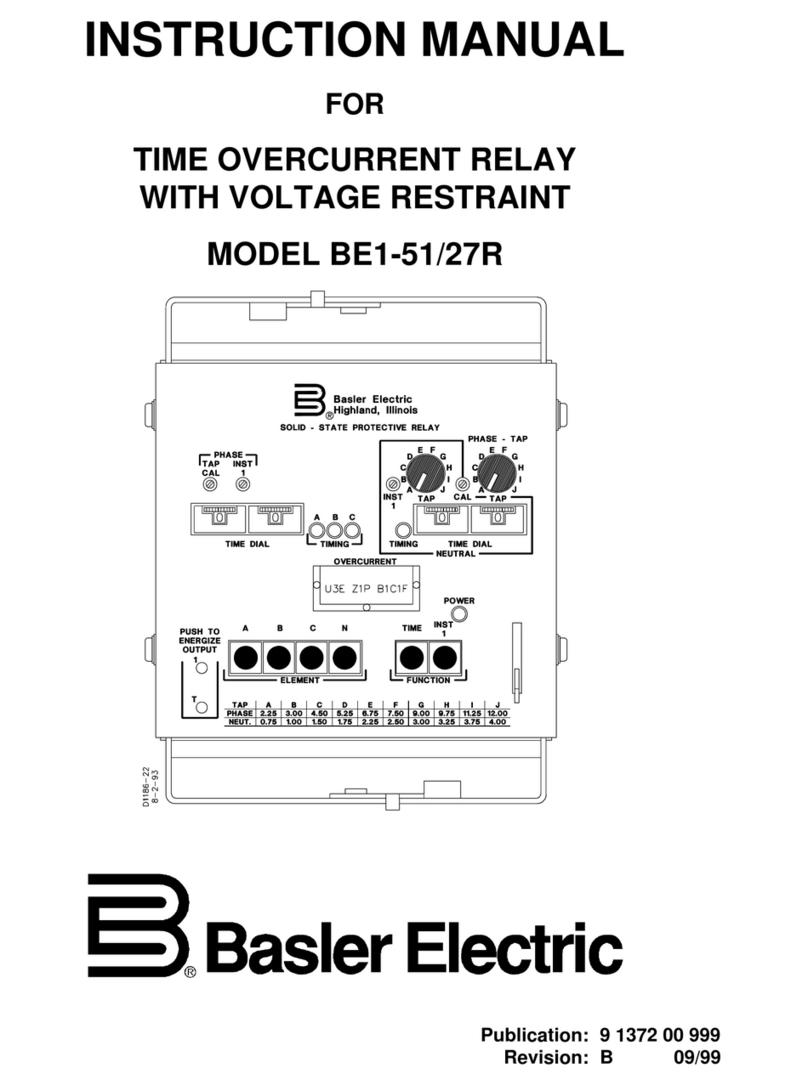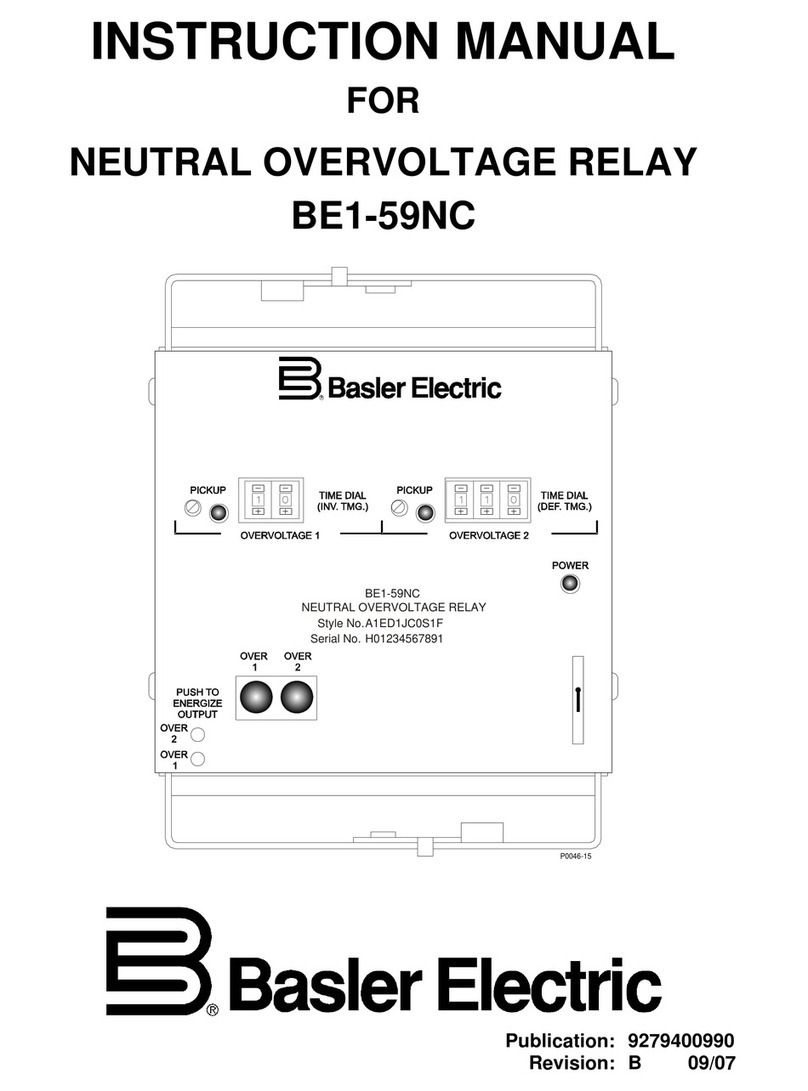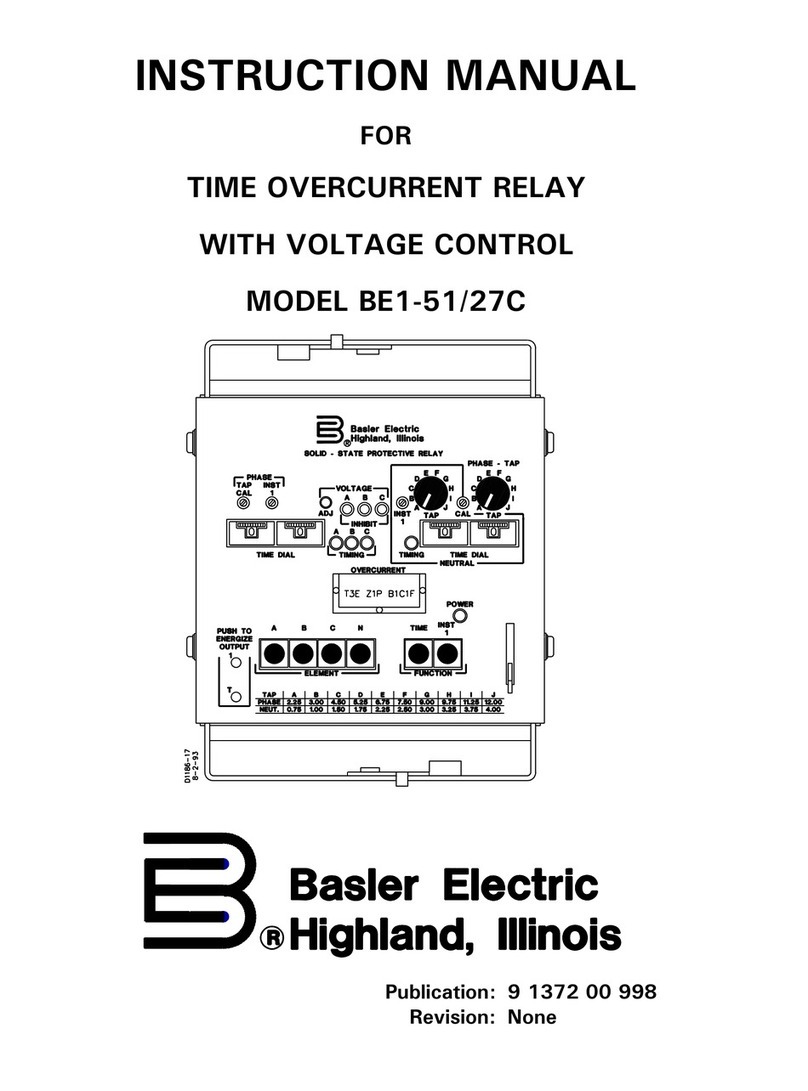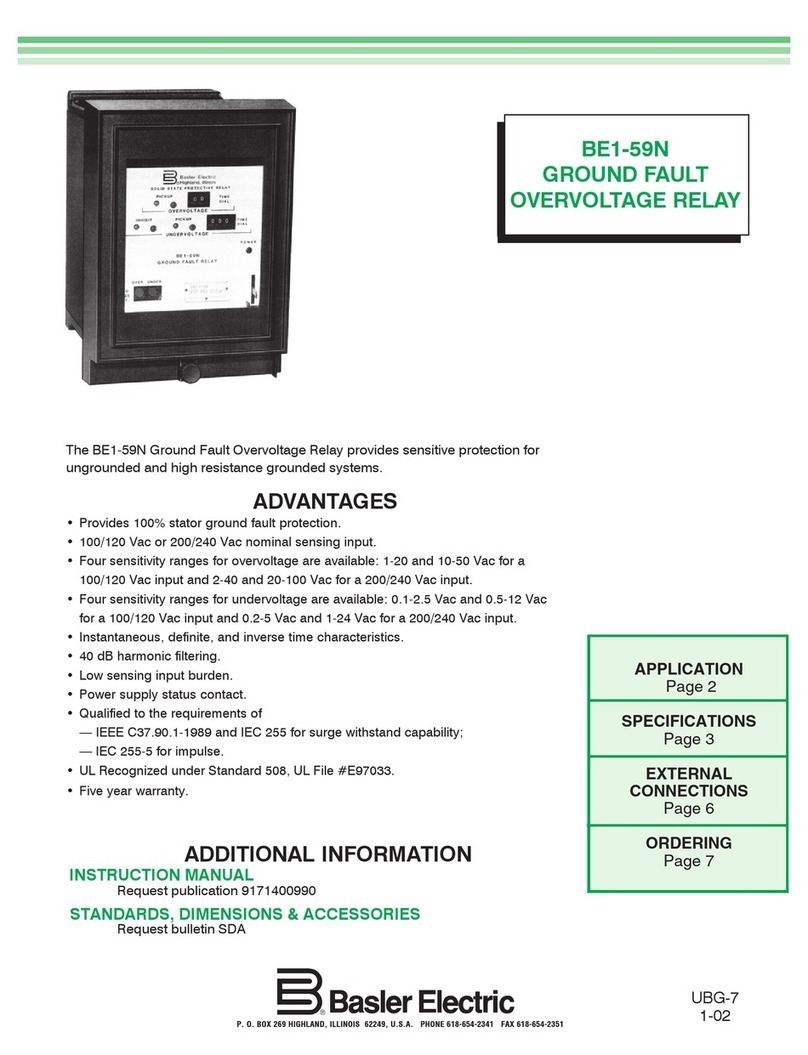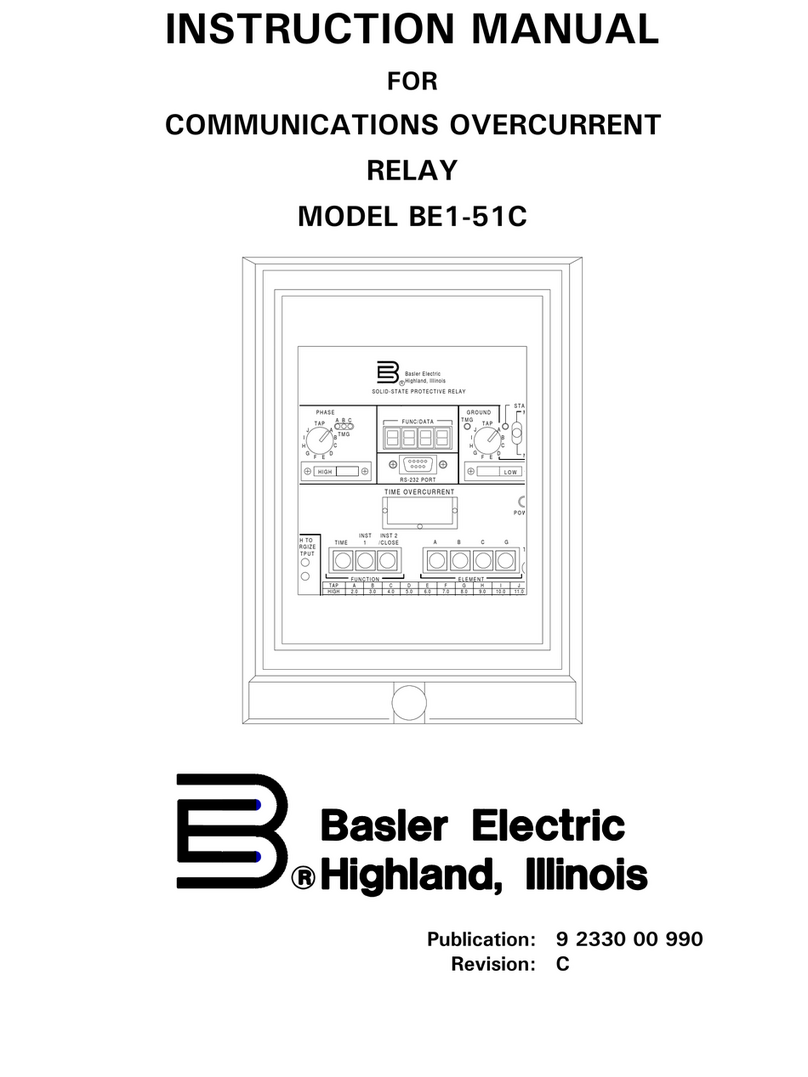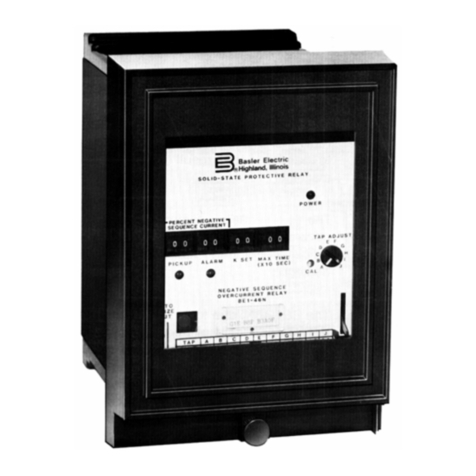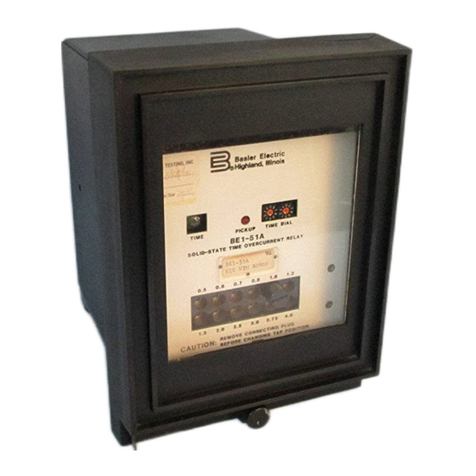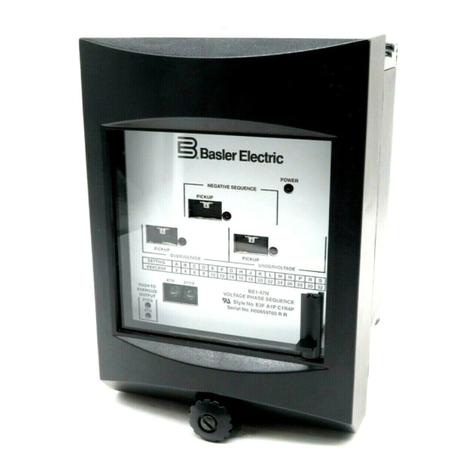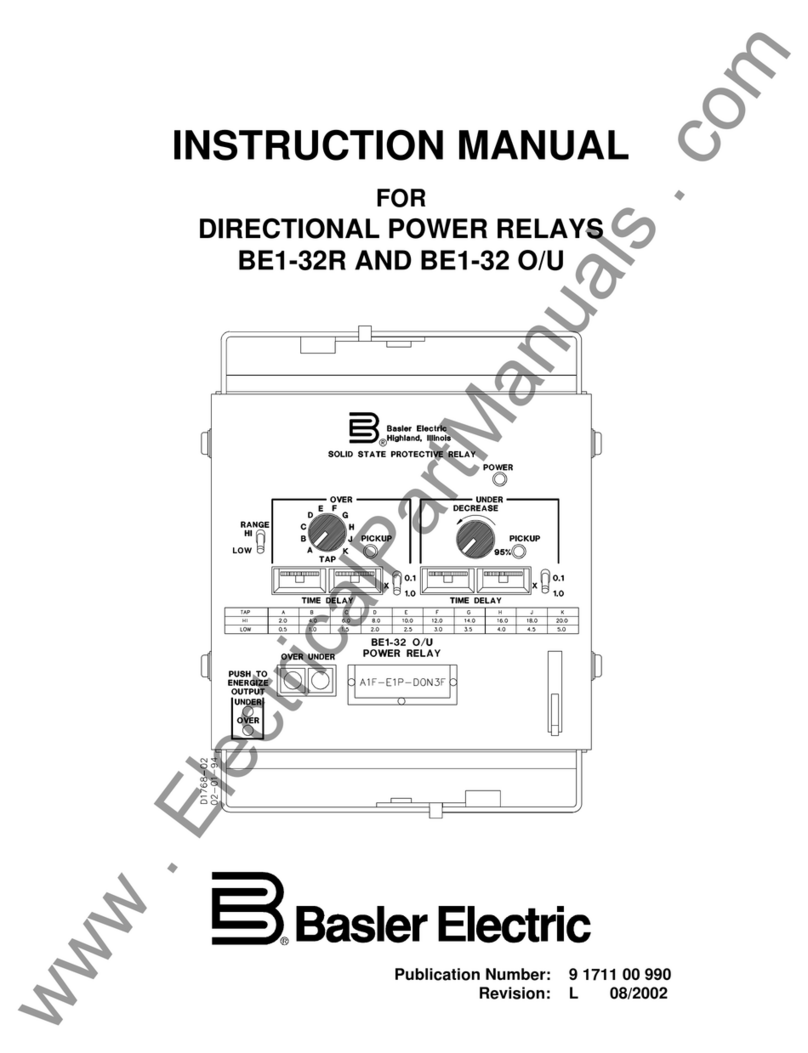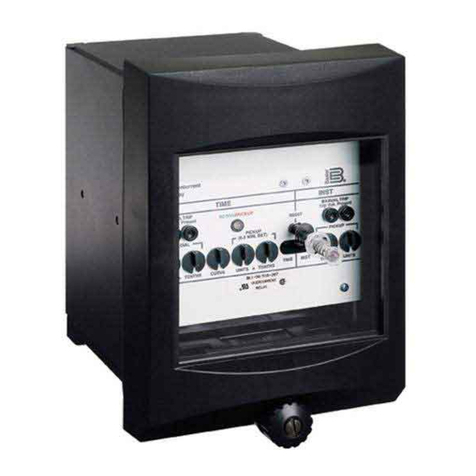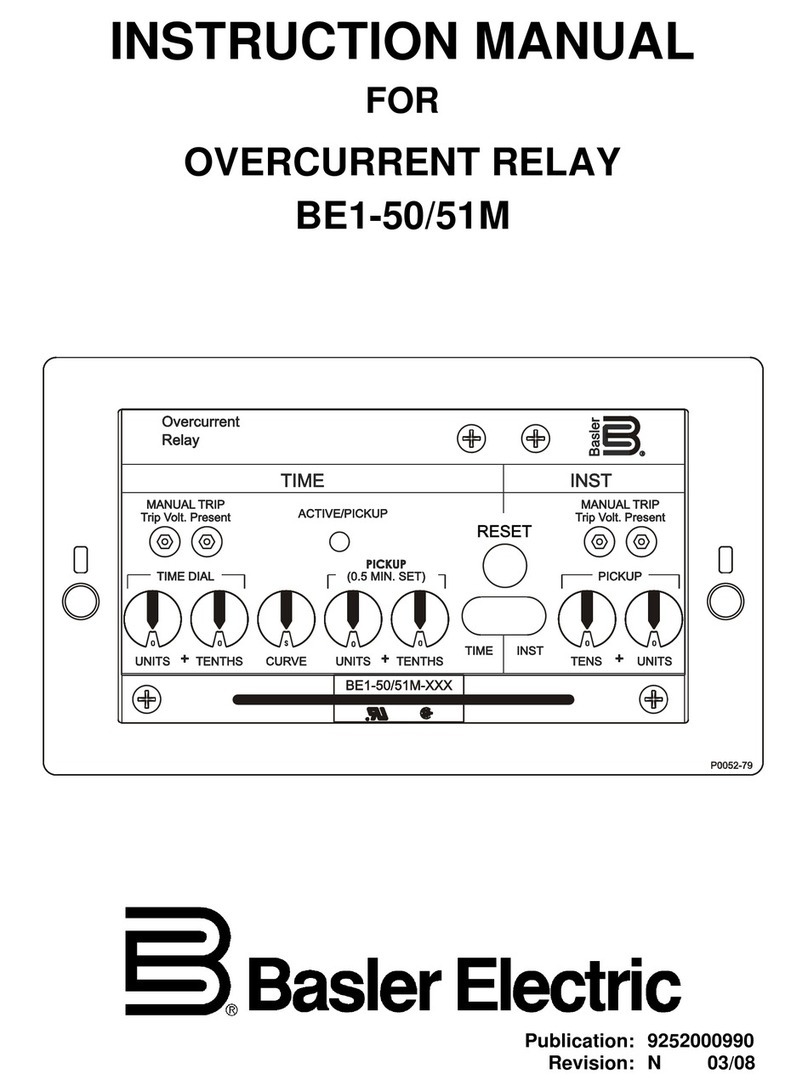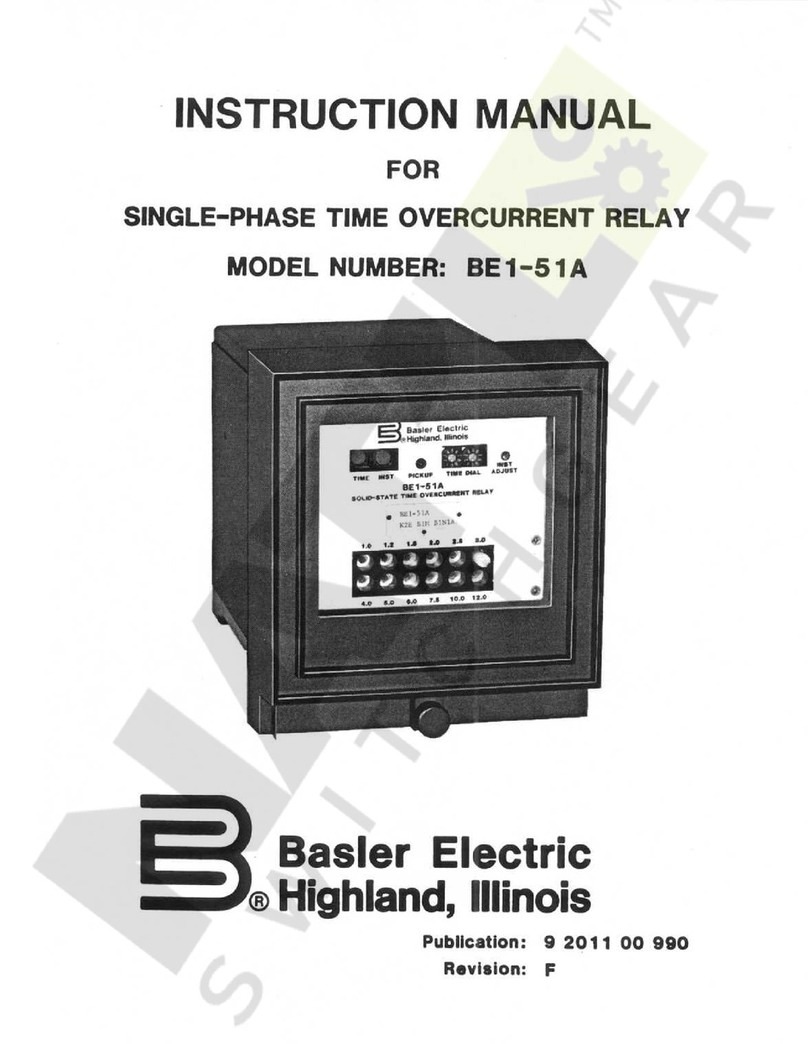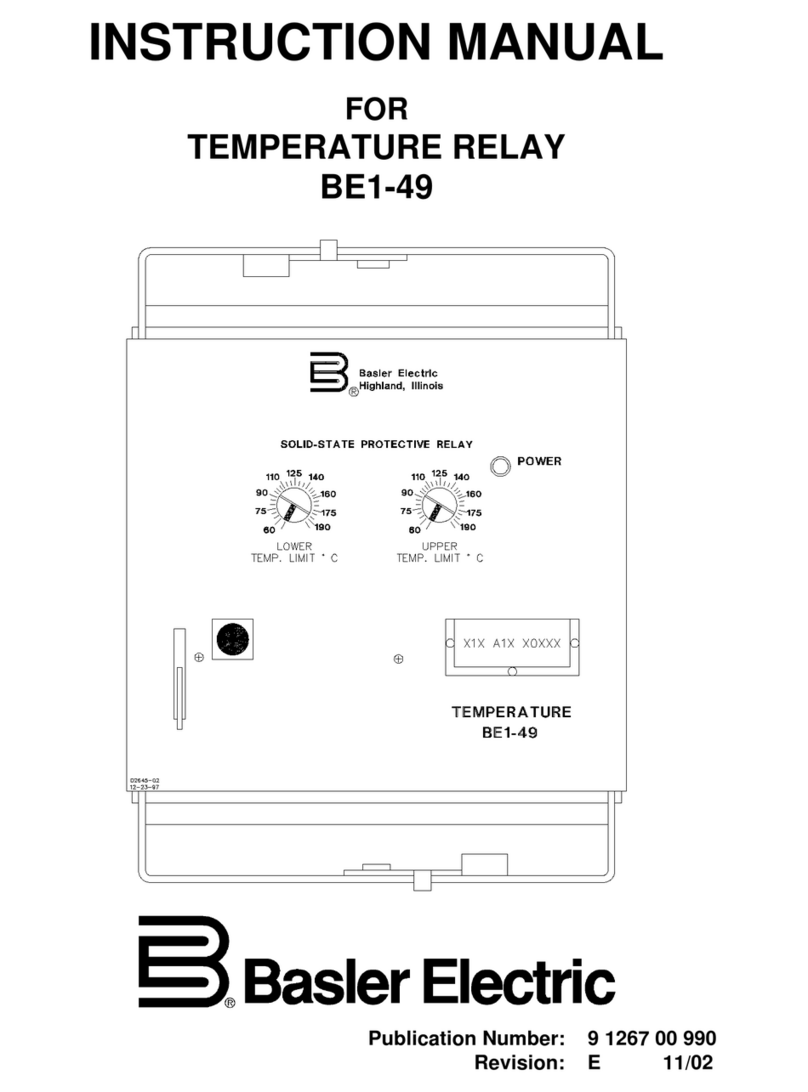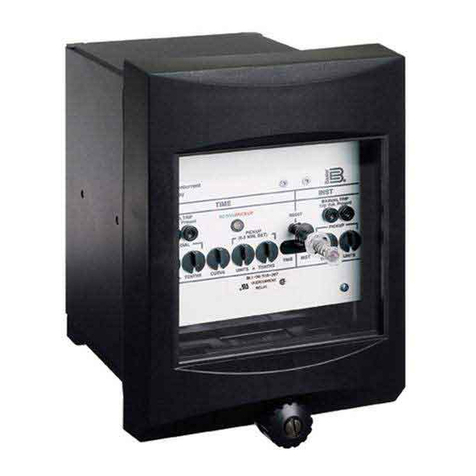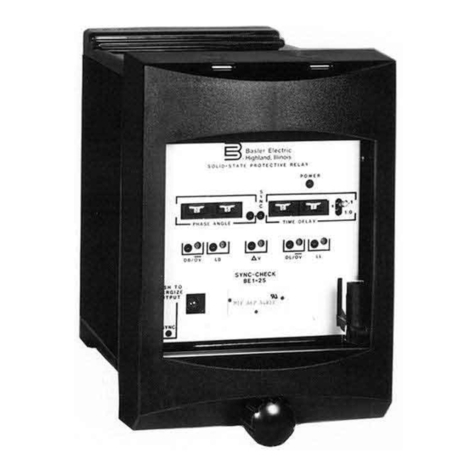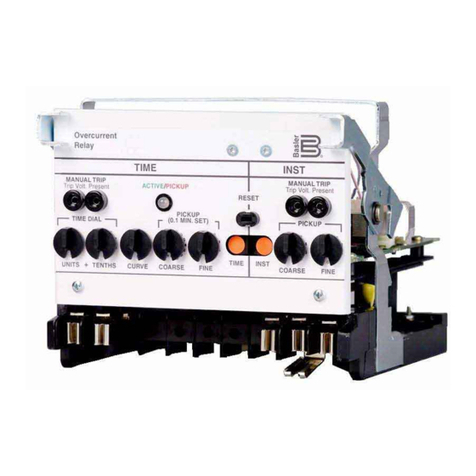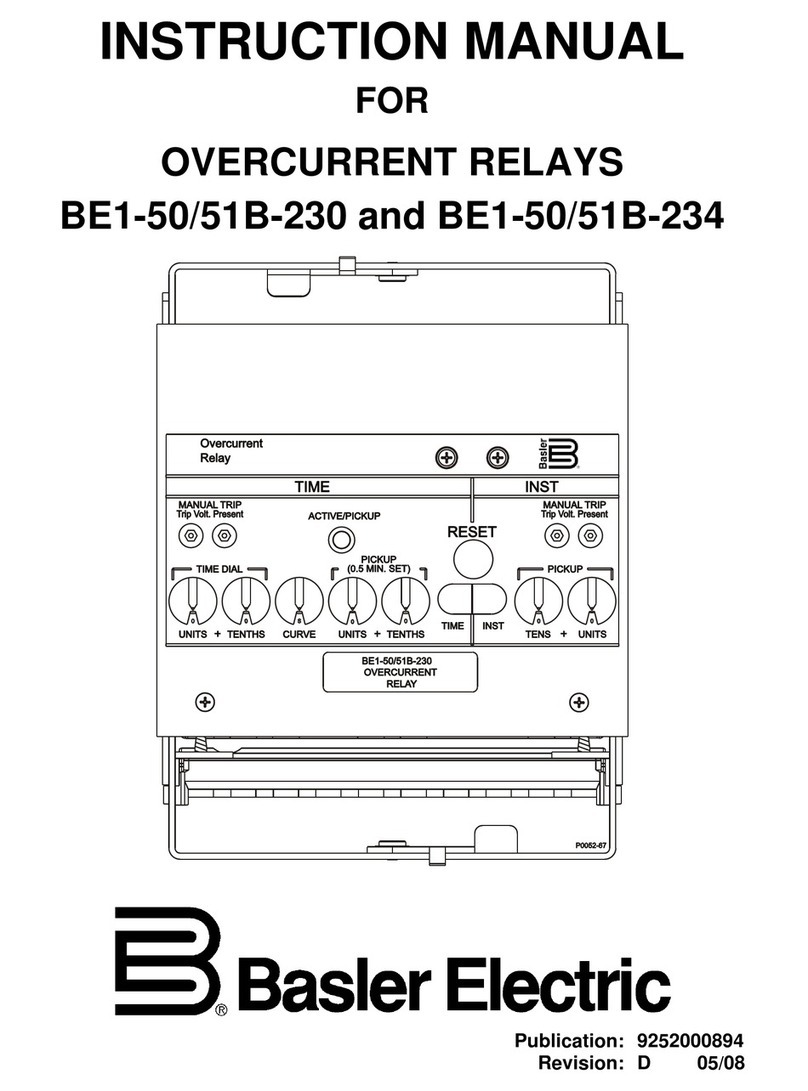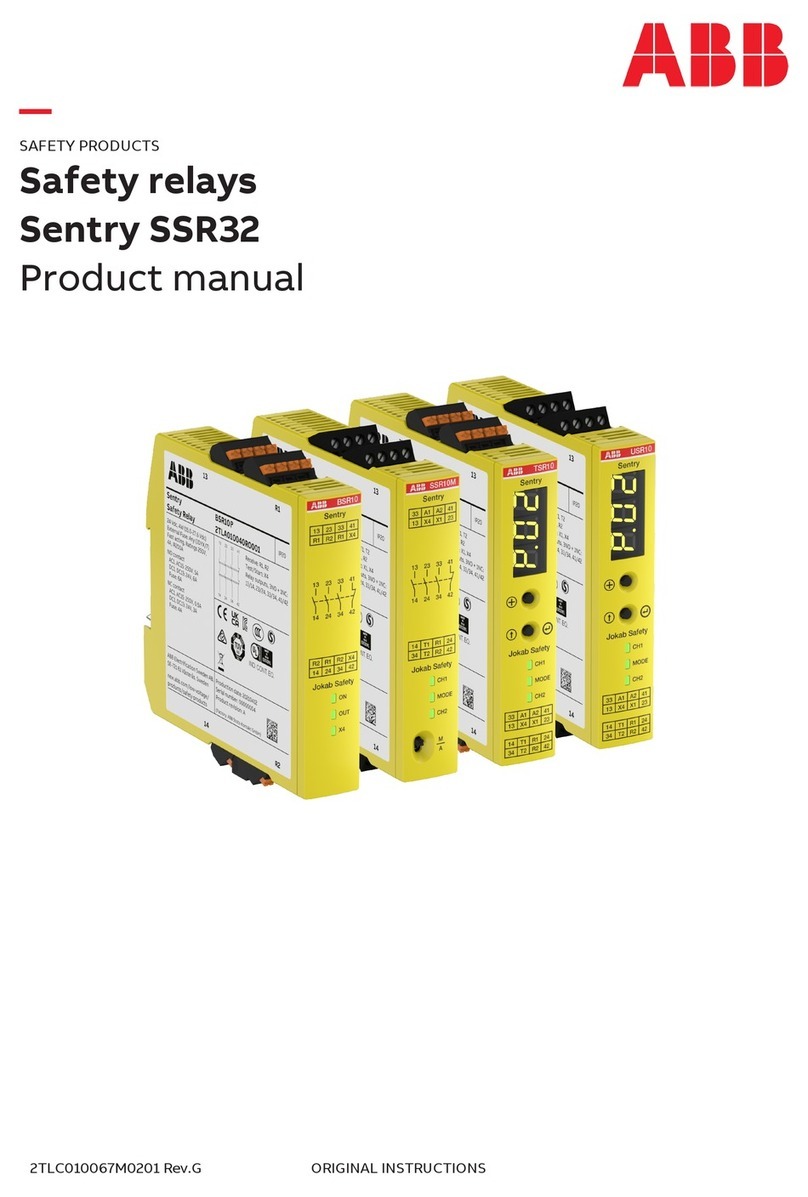
9252000981 Rev G BE1-50/51B-219/-226 General Information i
SECTION 1 •GENERAL INFORMATION
TABLE OF CONTENTS
SECTION 1 •GENERAL INFORMATION ................................................................................................1-1
INTRODUCTION....................................................................................................................................1-1
FEATURES............................................................................................................................................1-1
Advantages.........................................................................................................................................1-2
SPECIFICATIONS.................................................................................................................................1-2
Current Sensing Input ........................................................................................................................1-2
Time Overcurrent (51) Element..........................................................................................................1-2
Instantaneous Overcurrent (50) Element...........................................................................................1-5
Burden................................................................................................................................................ 1-6
Frequency Response.........................................................................................................................1-7
Transient Response ...........................................................................................................................1-7
Harmonic Response...........................................................................................................................1-7
Target Indicators ................................................................................................................................1-8
Output Contacts .................................................................................................................................1-8
Type Tests..........................................................................................................................................1-8
Environment .......................................................................................................................................1-9
Agency Recognition ...........................................................................................................................1-9
Physical..............................................................................................................................................1-9
Figures
Figure 1-1. Integrating Reset Characteristic Curve...................................................................................1-5
Figure 1-2. Instantaneous Characteristic Curves......................................................................................1-6
Figure 1-3. Burden Characteristics............................................................................................................1-7
Figure 1-4. Harmonic Rejection.................................................................................................................1-8
Tables
Table 1-1. ABB Relays Suitable for Direct Replacement..........................................................................1-1
Table 1-2. Time Characteristic Curve Constants with SW3-3 Open (Off).................................................1-3
Table 1-3. Time Characteristic Curve Constants with SW3-3 Closed (On) .............................................. 1-4

